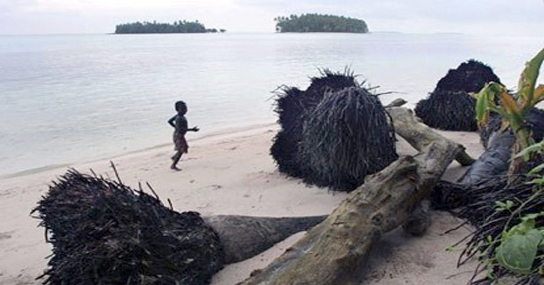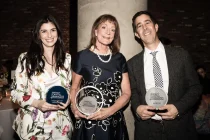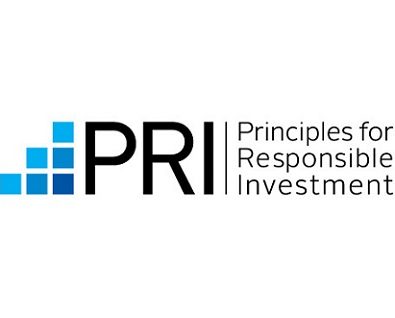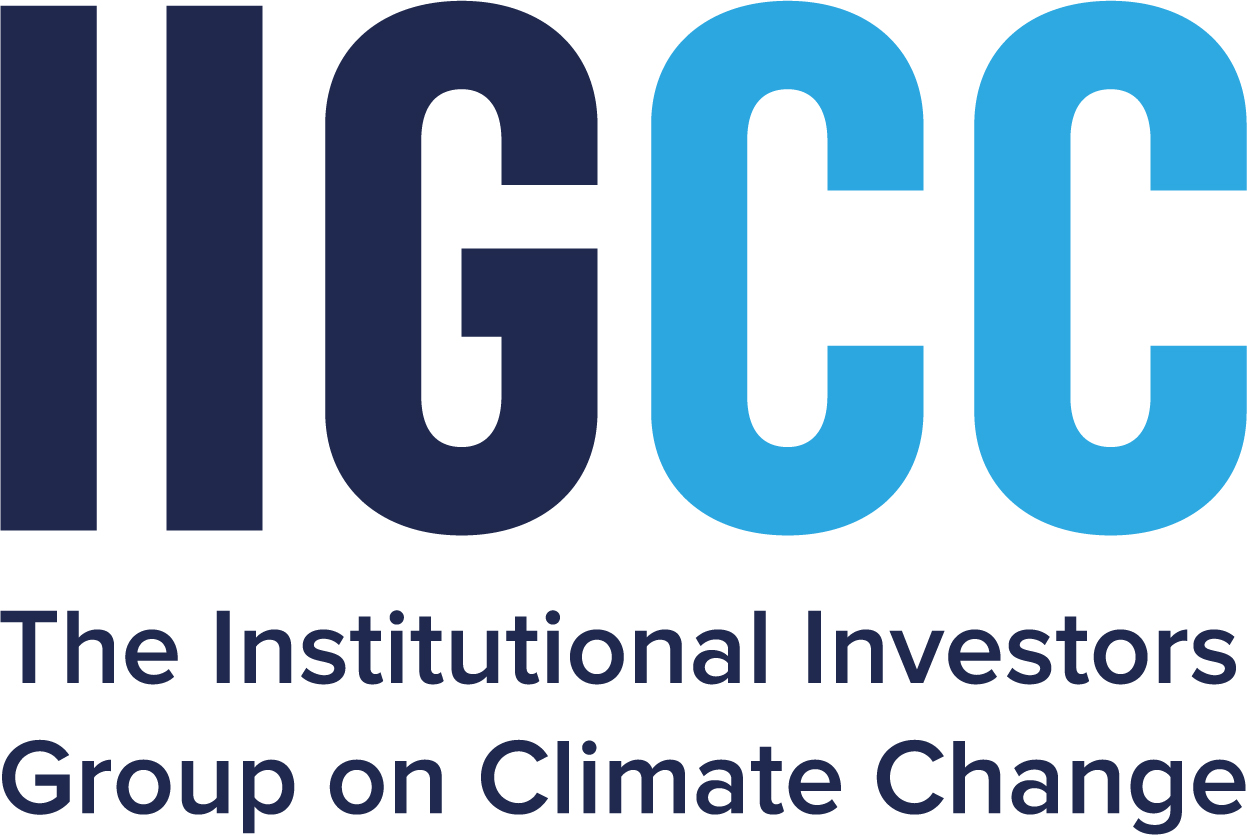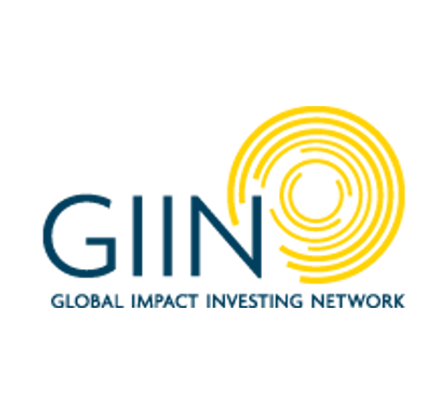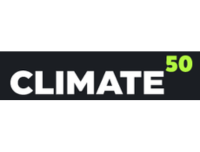A Changing Climate
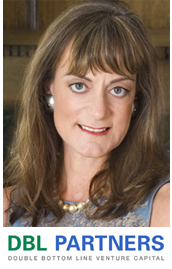 By 2050, the world will consume 61 percent more energy than it does today. This should be good news, for, as access to reliable, affordable energy increases, so does the quality of life for hundreds of millions of people. Energy keeps schools and businesses running, computers working, cities shining, and cars moving. Without the availability of energy, the global poverty rate could not have dropped by more than half since 1990, allowing the opportunity to improve lives across a wide sphere. And yet, in a skewed parallel, 1.3 billion people lack access to the most basic energy services and the economic, environmental and health benefits they provide. Furthermore, many are at a disproportionate risk to the world’s most pressing climate change threats.1 For example, The Carteret Islanders of Papua New Guinea have become the world’s first entire community to be displaced by climate change, recently packing up their lives to move out of the way of ever-rising waters that threaten to overtake their homes, their crops, and their history.
By 2050, the world will consume 61 percent more energy than it does today. This should be good news, for, as access to reliable, affordable energy increases, so does the quality of life for hundreds of millions of people. Energy keeps schools and businesses running, computers working, cities shining, and cars moving. Without the availability of energy, the global poverty rate could not have dropped by more than half since 1990, allowing the opportunity to improve lives across a wide sphere. And yet, in a skewed parallel, 1.3 billion people lack access to the most basic energy services and the economic, environmental and health benefits they provide. Furthermore, many are at a disproportionate risk to the world’s most pressing climate change threats.1 For example, The Carteret Islanders of Papua New Guinea have become the world’s first entire community to be displaced by climate change, recently packing up their lives to move out of the way of ever-rising waters that threaten to overtake their homes, their crops, and their history.
Extending Progress to the Developing World
The developed world has seen great progress in renewable energy. Today, in the United States, virtually all new additions to power capacity come from sustainable sources. However, much of the future energy demand in the world will come from developing countries as they continue to grow and add more citizens to the middle class. This is perhaps one of the most difficult challenges that we face today. How can we ensure that the most threatening climate change consequences are avoided, but also ensure equitable access to energy? The answer, of course, is renewable energy, and the attendant electrification of products and services once serviced by fossil fuels.2
Affordable and clean renewable energy would help millions of people escape poverty and become more self-sufficient. It would ease international tensions and increase global security by making more countries less dependent on oil. It would unlock new economic opportunities in a growing trillion-dollar industry. It would attract more foreign investment to the regions that need it most. It would lessen the problems caused by the expensive and sometimes dangerous work of extracting fossil fuels. It would reduce air pollution, which kills millions of people every year. And it would stabilize energy prices by eliminating the volatility of natural gas and oil, which will have an even bigger impact on the global economy as more people come to rely on energy in their daily lives.
The question that remains, however, is how do we economically provide clean energy to the billions of those who need it? In 11 countries, all in Africa, more than 90 percent of people go without electricity. In six of these countries, only three to five percent of people can readily obtain electric power.3
Fortunately, there is good news. The price of solar panels has decreased dramatically in the last decade by 70 percent. Solar installations have also grown exponentially, accounting for more than one percent of global electricity demand in 2015 and 22.5 percent of all new generation sources in the same year. Advances in storage and software have allowed us to push the boundaries on creating a smarter and cleaner grid. From streetlights to kitchen-top appliances, more devices and services are being connected in previously unimaginable ways; allowing a more sophisticated and efficient approach to managing demand and grid operations. With the growth of renewables, — some 13 percent of electricity consumption in the US in 20154, — and the increase in electrified fleets of cars entering the transportation sector, the traditional use and distribution are changing before our eyes. We are moving from a centralized energy system to one that integrates distributed energy resources, creative microgrid solutions, and, soon, vehicle to grid energy flows. It is truly staggering to see how much progress has been made in the energy industry in the last decade. Electric vehicle growth presents one of the most robust statistics in this regard, globally, from below 30,000 in 2010, to 720,000 in 2015, to one million today.
The Leapfrog Effect
Unlike the United States, many developing countries do not have a centralized energy infrastructure. In sub-Saharan Africa alone, almost 600 million people lack access to electricity and rely on burning biomass and fossil fuels such as kerosene. Although this notion seems outmoded, it actually presents a unique opportunity. Due to the special economic and geographic nature of many of these countries, they have the ability to completely skip primary dependency on the centralized grid and instead develop stand-alone solar storage systems and microgrids.
Examining the African continent’s progression through phones today, we can see that Internet browsing via phones now stands at 40 percent across these markets. We are at a pivotal moment where a similar explosion can occur in electricity use. Increasingly, economic, technological and financial advancements pioneered in the developed world can be applied in the countries that need them most in an efficient, local, and cost-effective manner.5
Although significant progress has been made in technologies such as wind, solar and electric vehicles, the scale of the most pressing climate change challenges requires the exploration of different and innovative approaches. Tech moguls have risen to the challenge. One of the most famous of these techno-philanthropists, Microsoft founder Bill Gates, with other technology leaders, has founded the Breakthrough Energy Coalition6 which has committed to dramatically scaling up the public research pipeline to develop the technologies that will make up the world’s new energy mix. Additionally, Mission Innovation7, which is an initiative driven by 18 countries, aims to reinvigorate and accelerate global clean energy innovation with the objective to make clean energy widely affordable on a global basis.
These technology gurus are one path to a low-carbon future, but they are by no means the only one. Given the scale of this challenge and the fact that we are running out of time, leaders should be exploring all potential avenues. Doing so is a job for both the public and private sectors. Partnerships will be key here: governments play an indispensable role in supporting energy research and early market development, helping private firms amass the funding and related resources to scale a multi trillion-dollar market.
Entrepreneurship has also played and will continue to play a critical role, especially in scaling innovations to create large markets. Entrepreneurship helps to catalyze action today, while we still have time to turn back the clock on the adverse effects of climate change.
Walking the Walk… to Africa
As a Founder at DBL Partners, I have been involved with many companies working on promising energy solutions. I only wish there were many more to choose from. Given the scope of this huge problem, there should be hundreds if not thousands of companies around the world exploring different approaches. Here at DBL, we’re walking the walk when it comes to stepping up and doing more. After 10 years of impact investing in the U.S., last year we took the plunge and made our first international investment in a Tanzanian company called Off Grid Electric (OGE)8. Having been at the forefront of investing in the American solar industry, DBL mitigated the risks on this African Investment by using lessons gained from over 15 years of experience in the space.
OGE is focused on providing clean solar-powered light, appliances and electricity to the bottom of the pyramid and beyond. OGE has developed a solar and storage system that takes advantage of the large penetration of the mobile payment market in Africa. Instead of paying for an expensive system upfront with cash, customers are able to make payments for lighting and a series of follow-on appliances with their cellphones to access the energy produced by their panels over a time period that suits their circumstances. By generating renewable power from the sun, OGE’s systems are helping introduce cleaner forms of energy into many households. As previously mentioned, many homes in Tanzania are still reliant on burning kerosene for lighting. According to the World Bank, this is equivalent to smoking almost two packs of cigarettes a day. Replacing all kerosene lamps worldwide with solar lights would dramatically improve the health of many throughout the world and would be the equivalent to a five percent reduction in the U.S’s annual carbon emissions. OGE has already reached over 100,000 customers and hopes to provide power to millions throughout Africa over the next five to ten years. A fringe benefit of these systems is that better lighting will help build the ranks of Africa’s middle class as darkness will no longer hold people back from pursuing education, entrepreneurship and at home-based employment.
The business model of OGE is designed in such a way that customers can maintain current spending on energy, but with cleaner and often times more powerful electronics. Starting with simple LED lighting and phone chargers, OGE also offers upgrades to radios and TVs that can enable customers to have modern devices at accessible prices. In many cases, in addition to modernizing home life, OGE is also helping create the advent of “solarpreneurs” by enabling people to start phone charging businesses or other companies with their new systems. Once this happens, regional investment will increase, jobs will be created, and an entire continent will light up not only with clean energy but also with a burgeoning middle class ready to put Africa on the 21st century map in a new, powerful way.
Going forward, we see a fantastic opportunity to build on the work that OGE and others in the off-grid sector are doing. Of course, unmistakable challenges exist and there is always the looming threat of going backward to a centralized fossil fuel dominated economy rather than forward to a clean energy one. Yet, in 2016, we cannot and should not sit back and watch massive income and energy inequality persist as though we were still living in the 19th or 20th century. Distributed renewables, investments in storage and scalable EVs offer a proven path toward a world with greater equality. The whole world is watching, and we don’t have time to wait. The time is now.
Article by Nancy E. Pfund, Founder and Managing Partner of DBL Partners (www.dbl.vc), located in San Francisco and Palo Alto. DBL Partners is a venture capital firm whose goal is to combine top-tier financial returns with meaningful social, economic and environmental returns in the regions and sectors in which it invests. As a leading player in the growing field of “impact investing”, DBL has helped to reveal the power of venture capital to promote social change and environmental improvement, and Ms. Pfund writes and speaks frequently on the field of impact investing. She sponsors or sits on the board of directors of several companies, including; SolarCity (NASDAQ: SCTY) on both the audit and compensation committees, and is chair of the corporate governance committee; Farmer’s Business Network, Advanced Microgrid Solutions, Off-Grid Electric, Primus Power, The Muse, and, prior to their public offerings, Tesla Motors and Pandora.
Ms. Pfund was recently featured in 2016 Fast Company’s 100 Most Creative People in Business list; featured #17 in the 2014 FORTUNE Inaugural World’s Top 25 Eco-Innovators; is Chair of the Advisory Council of the Bill Lane Center for the American West at Stanford University; a member of the Advisory Board of: the Lawrence Berkeley National Laboratory (Berkeley Lab); and the UC Davis Center for Energy Efficiency, and a Trustee of the National Geographic Society. She has been a Lecturer in Management at the Stanford Graduate School of Business and the Yale School of Management; and is a C3E Ambassador to the U.S. Clean Energy Education and Empowerment Program, led by the U.S. Department of Energy. She is also a founding officer and director of ABC2, a foundation aimed at accelerating a cure for brain cancer. Ms. Pfund received her BA and MA in anthropology from Stanford University, and her MBA from the Yale School of Management.
* The author would like to thanks DBL’s Summer Associate, Anjuli Koshal, for her assistance in writing this article.
Article Notes:
1 – World Energy Scenarios, Composing Energy Futures to 2050 –https://www.worldenergy.org/wp-content/uploads/2013/09/World-Energy-Scenarios_Composing-energy-futures-to-2050_Full-report.pdf
2 – Short Term Energy Outlook – https://www.eia.gov/forecasts/steo/report/renew_co2.cfm
3 – One-Quarter of World’s Population Lacks Electricity –http://www.scientificamerican.com/article/electricity-gap-developing-countries-energy-wood-charcoal/
4 – Electric Power Monthly – http://www.eia.gov/electricity/monthly/pdf/epm.pdf
5 – Study Reveals African Mobile Phone Usage Stats –http://www.itnewsafrica.com/2015/04/study-reveals-african-mobile-phone-usage-stats/
6- Breakthrough Energy Coalition –http://www.breakthroughenergycoalition.com/en/index.html
7 – Mission Innovation – http://mission-innovation.net
8 – Off Grid Electric – http://offgrid-electric.com

